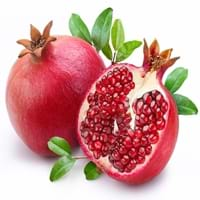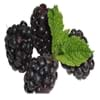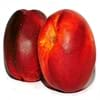Health Benefits
Cancer prevention, Gout treatment, Heart care, Regulation of heart rate, Treatment of rheumatism
Cancer prevention, Heart care, Helps in cartilage regeneration, Improves stomach health, Increase in haemoglobin, Increases metabolic rate, Prevents constipation
General Benefits
Anti oxidant properties, Controls blood pressure, Cures fever, Digestive aid, Healing of wounds, Helps in weight loss, Strengthens bones
Boosts immune system, Controls blood pressure, Controls blood sugar levels, Digestive aid, Maintains healthy cholesterol level
Skin Benefits
Brightens and lightens complexion, Reduces wrinkles, Treatment of acne
Anti-aging benefits, Skin rejuvenation, Treatment of acne
Hair Benefits
Protects hair
Prevents hair loss, Promotes longer and healthier hair, Treatment of dandruff
Allergy Symptoms
Abnormally rapid heart rate, Anaphylaxis, Breathing difficulty, Hives, Itching, Swallowing difficulties
Abdominal pains, Anaphylaxis, Itching
Side Effects
Possibly unsafe during pregnancy
Allergic reaction, Cold, Breathing difficulty, Irritation, Swelling
Best Time to Eat
Best if taken as a breakfast (or empty stomach), As a snack in the late afternoon, Don't eat after meal, Morning time (before lunch)
Best if taken as a breakfast (or empty stomach), As a snack in the late afternoon, Eat the fresh ones, avoid mixing with any other foods, don't eat after meal., Morning time (before lunch)
Vitamin B5 (Pantothenic Acid)
Vitamin C (Ascorbic Acid)
Vitamin K (Phyllochinone)
Calories in Fresh Fruit with Peel
Not Available
Calories in Fresh Fruit without Peel
Not Available
Calories in Frozen Form
Not Available
Not Available
Calories in Canned Form
Not Available
Not Available
Varieties
Rovada, Stanza, Red Lake, Junifer and Jonkheer van Tets
Balegal, Crab, Cloud, Francis, Freshman and Granada
Color
Red
Dark red, Light pink-red
Taste
Sour, Tart
Juicy, Sweet
Origin
Europe
India, Iran
Soil Type
Moist, Well-drained
Clay, Sand
Climatic Conditions
Cold
Cold, Dry, Hot
Facts about
- The albino version of red currants known as white currants, are often sold as different fruit.
- Red currant tea is healthy substitute for coffee.
- There are more than 150 varieties of red currants.
- Pomegranate means apple with many seeds.
- It was called as the “apple of Grenada” in early English.
- In Hinduism, this fruit symbolizes prosperity and fertility.
- Pomegranate trees can live upto 200 years.
Other Countries
Belgium, France, Germany, Ireland, Italy, Netherlands, Poland, Portugal, Scotland, Spain, Sweden, United Kingdom
Africa, India, Middle east, Pakistan
Top Importer
Germany
Europe
Top Exporter
Russia
India
Botanical Name
Ribes rubrum
Punica granatum
Synonym
Not Available
Punica malus
Subkingdom
Tracheobionta
Tracheobionta
Division
Magnoliophyta
Magnoliophyta
Class
Magnoliopsida
Magnoliopsida
Order
Saxifragales
Myrtales
Family
Grossulariaceae
Lythraceae
Species
R. rubrum
P. granatum
Generic Group
Saxifrage
Pomegranate
Compare Red Currant and Pomegranate
It is important compare Red Currant and Pomegranate as both the fruits have a different nutritional value. Their comparison can be done on the basis of their vitamin and mineral content, calories, benefits as well as characteristics, making it easier for us to choose the best fruit for our diet. Their general health benefits are as follows:
Red Currant Benefits: anti oxidant properties, controls blood pressure, cures fever, digestive aid, healing of wounds, helps in weight loss and strengthens bones.
Pomegranate Benefits: boosts immune system, controls blood pressure, controls blood sugar levels, digestive aid and maintains healthy cholesterol level.
Fruits are also used as a remedy for various hair problems. The hair benefits of Red Currant are: protects hair and hair benefits of Pomegranate are: prevents hair loss, promotes longer and healthier hair and treatment of dandruff. Some fruits are known to cause allergic reactions. The allergy symptoms of first fruit are: abnormally rapid heart rate, anaphylaxis, breathing difficulty, hives, itching and swallowing difficulties and the symptoms of second fruit are: abdominal pains, anaphylaxis and itching. Get sorted Red Currant vs Pomegranate comparison with the help of fruit comparison tool by fruitvs.com.









